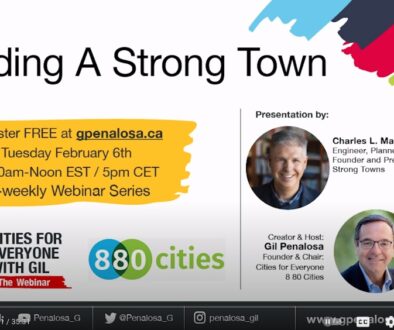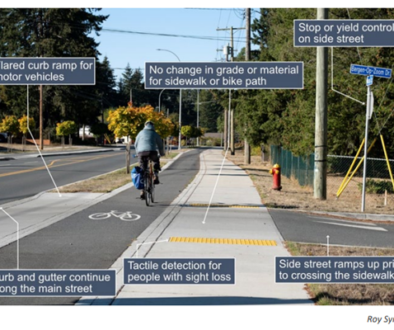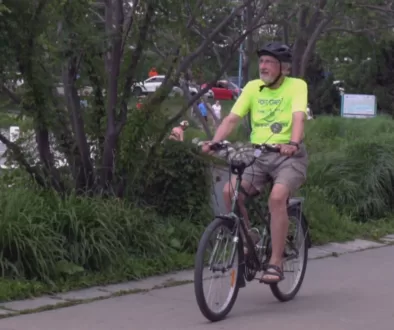A First-Person Visual Perspective of Safe Infrastructure for the Mobility Challenged
It is interesting that, oftentimes, attempts to solve different sets of problems converge toward a similar set of solutions.
Case in point – while the opinionators of cycling advocacy websites such as this one are constantly pounding the table for better cycling infrastructure, the kind of infrastructure we seek can also provide a tremendous boost to the quality of life for people with mobility issues.
More significantly, in addition to those fallen victim to reduced mobility due to specific illnesses, the age demographics of our society pretty much preordain that mobility issues will encompass a growingly large swath of our population in the coming decades.
Of course, we are talking about the aging baby boomers.
As this cohort starts to experience deteriorating vision, slower reactions and varying degrees of mobility restrictions due to health issues or, simply, mileage, they are faced with an unpalatable dilemma – continue to get behind the wheel and pretend to still be a skilled driver with adequate reflexes, or put away the key and learn to conduct daily necessities like shopping and medical appointments without the vehicle.
Worryingly, faced with the alternatives of isolation and feeling of losing one’s independence, most would choose to get behind the wheel and deal with any consequences if and when something bad happens.
For many boomers, the lyrics of this Billy Joel song come to mind:
“And you told me not to drive, but I made it home alive…” Rinse and repeat.
So in addition to having to deal with young, inexperienced drivers exercising their new freedom and demonstrating their need for speed, we will increasingly have to worry about seniors insisting on navigating their way home through the dark and rainy December nights.
This emerging issue calls for alternative ways for people with reduced mobility to get around instead of driving their cars. And it is from this broader societal context that this video taken in the Netherlands is especially instructive.
In the video, Melissa Bruntlett of Mobycon and Maya Levi, a Delft resident, student and mother living with Multiple Sclerosis, discussed how the Maya relies on her mobility scooter to access her city and the places she regularly travels. The film gives a first-person view of how a person with disability experiences the city’s infrastructure which allows her to conduct her daily activities, including shopping, going to the gym and enjoying a moment of serenity in a nature’s park – on her own and without needing the help from others.
The infrastructure involved as she went travelling through the city and to the destinations include separated bikeways, non-separated bike lanes, quiet neighborhood streets and mixed pedestrian areas inside the town centre. What is immediately apparent is that, in addition to the mobility device, the same infrastructure also serves as ‘mobility lanes’ which provide a safe and convenient mode of transportation to cyclists and people on skateboards and scooters.
One point brought up in the video which is not intuitively obvious to most, is the common misconception and objection to taking away parking spaces in favor of bike lanes (or mobility lanes): that it would reduce access or and take away trips from people with reduced accessibility. However, research shows the opposite is actually true. The objection presumes that those with mobility issues have access to and are in a condition to operate a vehicle. This presumption is untrue and will become increasingly so as the general population ages.
The interviewee reflects on the sense of independence afforded by the safe infrastructure provided by the city where she lives:
“Nothing is worse than being pushed by someone else, put somewhere, taken and brought like a package.”
Her sentiments – and the need for safer alternatives to driven trips – will increasingly surface in mainstream conversations and be demanded by our aging population.
Mobility access is one of those typical issues which management guru Stephen Covey describes as Quadrant 2 issues (not urgent but important). The good news is that it is not a clear and present danger which the 24/7 news cycle would mostly cover. The challenge, however, is that infrastructure requires decades of planning and implementation to put in place. Forward look politicians and city planners are well advised to put some concrete steps in place in their long term planning endeavors ahead of this tidal wave.



